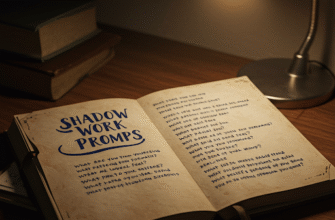Discover Creative Gratitude Journal Ideas
In a world that often feels overwhelming and fast-paced, taking a moment to appreciate the good things in our lives can be a powerful antidote to stress and negativity. A gratitude journal is a simple yet profound tool for cultivating this appreciation. While the basic concept is straightforward – writing down things you’re grateful for – the way you approach it can be as unique and creative as you are. Let’s explore some exciting and imaginative gratitude journal ideas to spark your inspiration and help you make gratitude a vibrant part of your daily life.
Before we dive into the specifics, let’s touch upon why gratitude journaling is so beneficial. Numerous studies have linked gratitude to increased happiness, improved sleep, reduced anxiety, and stronger relationships. It’s not just about listing things; it’s about shifting your focus to the positive aspects of your life and recognizing the value in even the simplest experiences.
Research consistently demonstrates a strong correlation between practicing gratitude and increased overall well-being. Regular gratitude journaling has been shown to rewire the brain, making it easier to notice and appreciate positive experiences.
Beyond the Daily List: Innovative Approaches
While a simple list of things you’re grateful for is a great starting point, there’s no need to limit yourself. Here are some creative ideas to inject personality and engagement into your gratitude journal:
- The Themed Gratitude Journal: Dedicate each journal entry to a specific theme. One day, you might focus on gratitude for your body and its abilities. Another day, you could write about the kindness of strangers. Themes can include relationships, nature, personal growth, small victories, or even challenges that have led to valuable lessons.
- Gratitude Letters: Instead of simply listing people you’re grateful for, write a short letter to someone expressing your appreciation. You don’t necessarily have to send the letter (though you certainly can!), the act of writing it is the key. Focus on specific qualities you admire and the positive impact they have had on your life.
- The Visual Gratitude Journal: Combine writing with visual elements. Add photos, drawings, sketches, stickers, or magazine clippings that represent the things you’re grateful for. This can be especially powerful for visual learners and those who enjoy creative expression. Imagine a page dedicated to gratitude for your pets, filled with photos and drawings of your furry friends!
- Gratitude Jar Prompts: Write down a list of gratitude prompts on small pieces of paper and place them in a jar. Each day, draw a prompt and use it as inspiration for your journal entry. This adds an element of surprise and ensures you’re exploring different aspects of gratitude. Examples of prompts: “What’s something you learned today?”, “What made you laugh?”, “Who inspired you this week?”, “What small thing brought you joy?”.
- Gratitude Affirmations: Transform your gratitude into affirmations. Instead of just stating what you’re grateful for, rephrase it as a positive statement about yourself and your life. For example, instead of “I’m grateful for my health,” try “I am healthy and strong, and I appreciate my body’s ability to support me.”
- The Reverse Gratitude Journal: Sometimes, reflecting on what we *don’t* have can help us appreciate what we *do* have. Instead of focusing solely on positive things, write about challenges you’ve overcome, difficult situations you’ve learned from, or things you used to struggle with but no longer do. This isn’t about dwelling on negativity; it’s about acknowledging growth and resilience.
- Gratitude in Nature Journal: Take your journal outdoors and connect with nature. Find a peaceful spot and write about the beauty and wonder you observe. Focus on the sounds, smells, textures, and colors around you. Express your gratitude for the natural world and its ability to nourish and inspire you.
- Gratitude for Small Things: It’s easy to overlook the small, everyday moments that bring us joy. Make a conscious effort to notice and appreciate these seemingly insignificant things. The perfect cup of coffee, a warm hug, a sunny day, a comfortable bed – these small pleasures can make a big difference in our overall sense of well-being.
Tools and Techniques for Enhanced Gratitude
The type of journal you use, the writing tools you choose, and the techniques you employ can all contribute to a more engaging and fulfilling gratitude journaling experience.
- Choosing the Right Journal: Don’t underestimate the importance of a journal that feels good to write in. Consider the size, paper quality, and binding. Do you prefer lined or unlined pages? A hard cover or a soft cover? Experiment with different types of journals until you find one that you genuinely enjoy using. A beautiful journal can inspire you to write more often.
- Pens and Colors: Experiment with different pens, pencils, and colors to add visual interest and express your creativity. Use colorful pens to highlight key words or phrases, or create doodles and illustrations to accompany your writing.
- Time of Day: Experiment with different times of day to find what works best for you. Some people prefer to write in their gratitude journal first thing in the morning to start their day on a positive note. Others find it more helpful to reflect on their day in the evening before bed.
- Setting the Mood: Create a relaxing and inviting atmosphere for your gratitude journaling practice. Light a candle, play some soothing music, or brew a cup of tea. Eliminate distractions and allow yourself to fully immerse in the experience.
- Be Specific: Avoid generic statements of gratitude. Instead of writing “I’m grateful for my family,” be specific about what you appreciate about them. For example, “I’m grateful for my sister’s sense of humor and her ability to make me laugh even when I’m feeling down.”
- Don’t Just List, Reflect: Go beyond simply listing things you’re grateful for. Take the time to reflect on why you appreciate those things and how they contribute to your overall well-being. This deeper level of reflection will amplify the benefits of gratitude journaling.
- Be Consistent (But Flexible): Aim to write in your gratitude journal regularly, but don’t beat yourself up if you miss a day or two. The key is to find a rhythm that works for you and to make gratitude a sustainable part of your routine. Even a few minutes of gratitude journaling each day can make a significant difference.
Gratitude Journaling Prompts to Get You Started
Sometimes, all you need is a little nudge to get the creative juices flowing. Here are some prompts to spark your gratitude journaling practice:
- What is something you accomplished today that you’re proud of?
- Who is someone who consistently supports you, and what do they do that you appreciate?
- What is a skill or talent you possess that you’re grateful for?
- What is a place that makes you feel peaceful and happy?
- What is a book, movie, or piece of music that has inspired you?
- What is a challenge you’ve overcome, and what did you learn from it?
- What is something you’re looking forward to in the future?
- What is a simple pleasure that you often take for granted?
- What is a part of your body that you appreciate and why?
- What is something you learned recently that you’re grateful for?
Overcoming Challenges and Staying Motivated
Like any new habit, gratitude journaling can sometimes feel challenging. Here are some tips for overcoming common obstacles and staying motivated:
- Feeling Uninspired: If you’re struggling to find things to be grateful for, try focusing on the basics. Appreciate your health, your home, your food, and your access to clean water. Even the simplest things can be sources of gratitude.
- Lack of Time: If you’re short on time, try setting aside just five minutes each day for gratitude journaling. You can write a few quick notes or simply reflect on a few things you’re grateful for in your mind.
- Negative Thinking: If you’re feeling overwhelmed by negative thoughts, try to balance them with positive ones. Acknowledge your challenges, but also focus on the good things in your life.
- Boredom: If you’re getting bored with your gratitude journal, try experimenting with different formats and prompts. Introduce visual elements, write gratitude letters, or focus on specific themes.
- Accountability Partner: Find a friend or family member who also wants to practice gratitude and hold each other accountable. Share your gratitude lists or journal entries with each other and offer support and encouragement.
Gratitude journaling is a personal practice, and there’s no right or wrong way to do it. Don’t compare yourself to others or feel pressured to write a certain amount. Focus on what brings you joy and helps you cultivate a sense of appreciation.
Making Gratitude a Lifelong Practice
The benefits of gratitude journaling are cumulative. The more you practice, the more you’ll train your brain to notice and appreciate the good things in your life. Make gratitude a lifelong practice by incorporating it into your daily routine and making it a priority.
Ultimately, the best gratitude journal is the one that you’ll actually use. Experiment with different ideas and techniques until you find what resonates with you. Embrace your creativity, have fun, and allow gratitude to transform your life for the better. Happy journaling!
So, ditch the mundane routine and embark on a journey of thankfulness and joy with these creative gratitude journal ideas! You will find that expressing thankfulness will bring fulfillment and happiness into your life!








